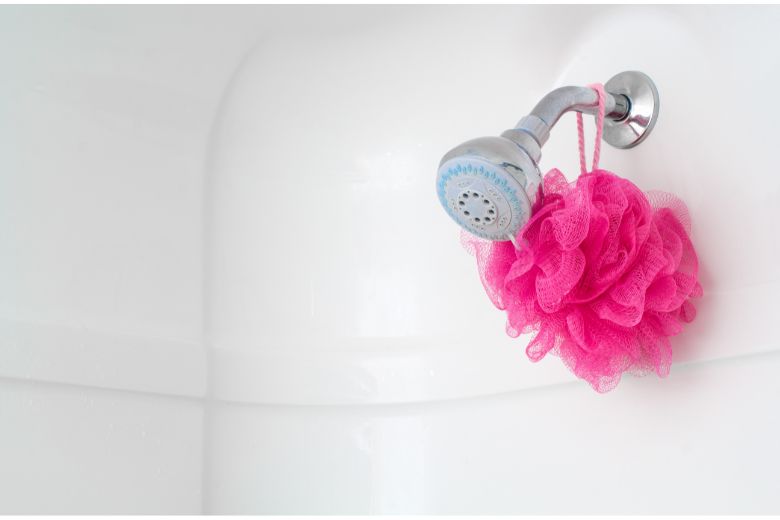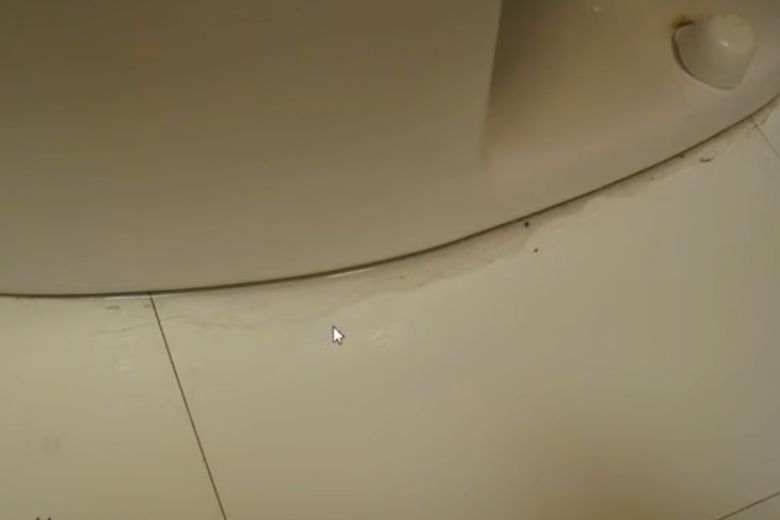There is nothing like a horrible day if you find your shower without water. Although it rarely happens, but indeed gives you a minor heart attack. Since having a functional and reliable water supply is crucial for households.
However, We Often Come Across Few Quarries:
- There is no water in the bathroom but everywhere else
- Why is there no hot water in the shower or bathtub?
- No water in the shower, but the sinks are fine
- Cold water is coming out of the hot water faucet. What to do?
- Why is there no cold water in the shower after replacing the cartridge?
All quarry has a valid reason but comes with a different solution depending on the problem. With that said, today we have focused on number 3 point # no water in shower, but sinks are fine. For other problem solutions, you can click the link to get information.
We have covered all of them with different articles. Let’s focus on why your shower is not working but the sink is.
However, you’re experiencing a lack of water in your shower while the sinks are working fine. A specific issue, such as a clogged showerhead or a faulty diverter valve, likely causes it. Moreover, note that there could be other potential reasons for this problem. You need further investigate and learn about fixing steps to pinpoint the exact cause and find a solution.
Possible Cause and Solution of No Water in Shower but Sinks Are Fine
Previously we have included the primary reason for the shower not working, but the sink is. Now have a close look at the problem.
1. Water Supply Issues and Solution
The first aspect to consider a lack of water in your shower is the water supply itself. Here are a few potential culprits:
- Water Valve: Check if your shower’s water valve is fully open. Sometimes, the valve may be partially closed. It happens due to accidental manipulation or maintenance work in your home. Therefore, it is restricting the flow of water. Inspect if it is fully open to ensure proper water supply.
- Pressure Regulator: The pressure regulator is another component that can affect water flow. A malfunctioning pressure regulator may result in reduced water pressure. It leads to insufficient flow in your shower. Consider having a professional inspect and adjust the regulator if needed.
2. Clogged Showerhead or Pipes and Fixing Process
As time passes, mineral deposits and debris accumulate in your showerhead and pipes. It can cause blockages that hinder the water flow. To address this issue:
- Showerhead: Remove the showerhead and soak it in vinegar and water. The acidic properties of vinegar help dissolve mineral deposits. Scrub the showerhead with a soft brush to remove the remaining residue. Rinse it thoroughly before reattaching it to the shower arm.
- Pipes: To clog in the pipes, you can use a plumber’s snake or a pipe-cleaning solution to clear the obstruction. Although, it would be best to leave this task to a professional plumber.
3. Faulty Shower Diverter or Cartridge and Solution
The shower diverter or cartridge directs water flow between the showerhead and the tub faucet. If either of these components is defective. It can disrupt the water supply to the shower. Consider the following steps to solve the issue:
- Shower Diverter: Inspect the shower diverter to ensure it is in the correct position. Sometimes, it may become stuck or misaligned. As a result, it diverts water away from the showerhead. Gently manipulate the diverter to see if the water flow is restored.
- Cartridge: For showers with single-handle faucets, a faulty cartridge can cause issues with water distribution. Replacing the cartridge may be necessary to restore proper water flow. Consult a plumber or refer to the manufacturer’s instructions for guidance on cartridge replacement.
4. Issues with Hot Water Supply and Solution
If your shower lacks hot water, the sinks have no trouble producing it. The problem may lie with your water heater. Consider the following factors:
- Hot Water Settings: Verify that the temperature settings on your water heater are appropriately adjusted. If the temperature is set too low, it can affect the availability of hot water in your shower.
- Defective Heating Element: The inadequate hot water supply can occur for two reasons. One is a malfunctioning heating element in an electric water heater. Secondly, a faulty burner assembly in a gas water heater. In such cases, it is advisable to contact a professional plumber. Because to fix the issue, you need professional experience. So, let a professional plumber diagnose and repair the problem effectively.
- Flushing the Water Heater: Flushing the water heater can help remove sediment and improve hot water flow. Refer to the manufacturer’s instructions on how to wash your specific type of water heater.
5. Valve Malfunction and Fixing Process
Faulty shower valves or diverter valves can disrupt the water flow to the showerhead while allowing water to reach the sinks. It can occur due to wear and tear over time or internal damage.
- Locate the diverter valve: The diverter valve directs water between the showerhead and the tub faucet. It is usually located on or near the tub spout or within the wall.
- Inspect the Shower Valve: Start by examining the shower valve for any visible signs of damage or leakage. If you notice any issues, replacing the valve or its components may be necessary.
- Clean the diverter valve: If you notice any debris or mineral deposits. Clean the valve using a toothbrush and a solution of vinegar and water. Gently scrub the buildup and rinse with normal water.
- Test the valve: Turn on the water and see if the valve is now functioning properly. The issue may be resolved if the water flows correctly to the showerhead. However, if the problem persists, continue troubleshooting.
- Replace the diverter valve: If cleaning the valve didn’t solve the problem, it might be necessary to replace it. Consult a plumber or follow manufacturer instructions to remove the old valve and install a new one safely.
6. Address Hidden Leaks and Fix It
Sometimes, leaks may occur within the walls or behind the shower fixtures, leading to a lack of water flow.
- Look for visible leaks: Inspect the areas around sinks, toilets, showers, and water-using appliances for any signs of leaks. If you find water pooling, dampness, or dripping, you must fix it.
- Leak put off: Use pipe sealant or plumber’s epoxy to repair them. To do so, first, clean and dry the area. Next, choose the appropriate sealant or epoxy. Apply the sealant or epoxy to cover the leak. Allow enough curing or drying time. Test for leaks before considering the repair successful.
If the damage is severe, consider contacting a professional plumber to replace the damaged section of the pipe.
7. Check Shower Connections
Inspect the showerhead, shower arm, and any visible pipes for signs of leaks. Look for dripping water or wet areas around the connections.
- Solution: Tighten any loose connections using a wrench or pliers. Apply the plumber’s tape or thread sealant to the shower arm threads before reattaching the showerhead. If there are damaged or worn-out parts, such as gaskets or O-rings, replace them.
8. Additional Considerations
If none of the above solutions address the no-water-in-shower problem. There are a few additional aspects you can explore:
- Water Pressure Booster: Installing a water pressure booster system can help improve water flow throughout your home, including the shower. This option is particularly beneficial if you experience low water pressure in multiple areas of your house.
- Plumbing Inspection: If the problem persists and you’ve exhausted all the troubleshooting options. It may be time to consult a professional plumber. They can thoroughly inspect your plumbing system to identify any underlying issues. Therefore, provide appropriate recommendations for repairs or upgrades.
Frequently Asked Questions
How much does it cost to repair a pressure-balancing valve?
Answer: The cost of repairing or replacing a pressure-balancing valve can vary depending on the situation and the plumber’s rates. Contacting a few plumbers and requesting quotes for an accurate estimate is best.
How can I check if the pressure regulator is malfunctioning?
Answer: You can monitor the water pressure throughout the house to check if the pressure regulator is malfunctioning. Inconsistent or unusually high/low water pressure can indicate a problem with the pressure regulator. It may require adjustment or replacement by a professional plumber.
Where is a pressure-reducing valve located?
Answer: The pressure-reducing valve is typically located near the main water line where it enters your home.
When should I call a professional plumber?
Answer: Consider calling a professional plumber when encountering extensive or widespread plumbing problems. Therefore, you have no plumbing knowledge, face safety concerns, experience recurring issues, or need assistance with compliance or complex repairs.
A professional plumber has the expertise, tools, and experience to handle various plumbing issues safely and efficiently.
Conclusion
To warp up, when you face no water in shower but sinks are fine, don’t panic. Take time to find the leading cause behind it; then, you can solve it yourself or take professional help. Remember, following the appropriate step can increase your chances of resolving the vexing issue.
Don’t let the frustration of a waterless shower dampen your spirits. Take action, implement the appropriate solutions, and bid farewell to the “shower not working but sink is” conundrum!
Paul Newman is a blogger who writes about plumbing and home improvement. Over the past 20 years, I have worked as a plumber. My passion is to share my knowledge and experience with others to improve their homes.




